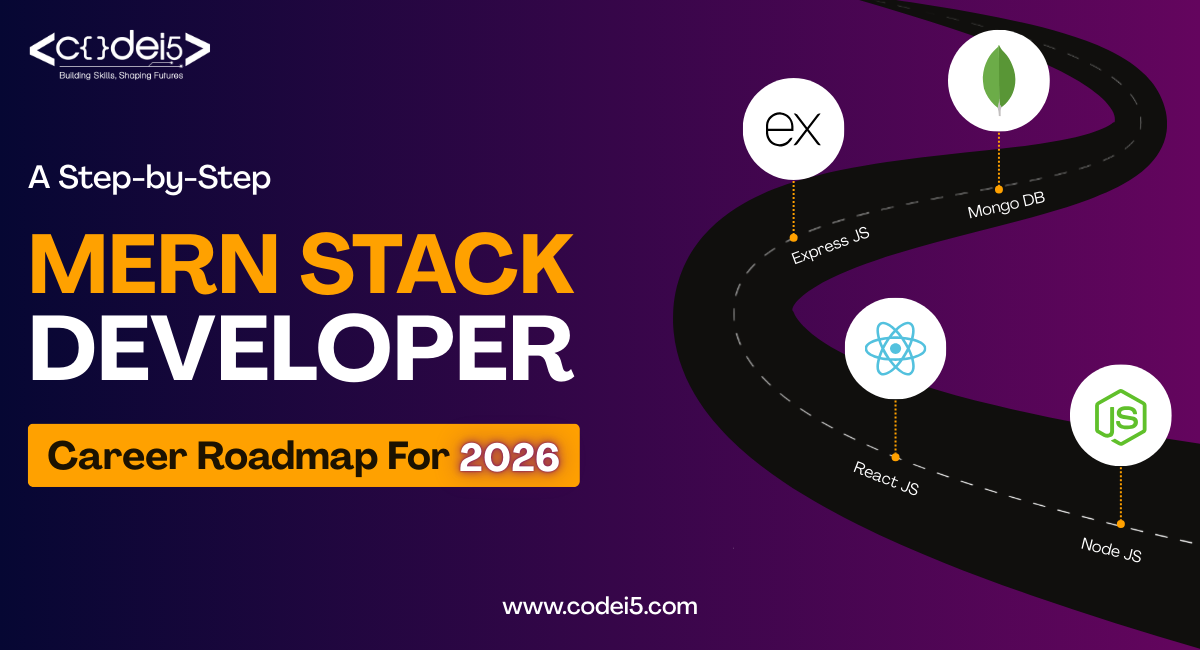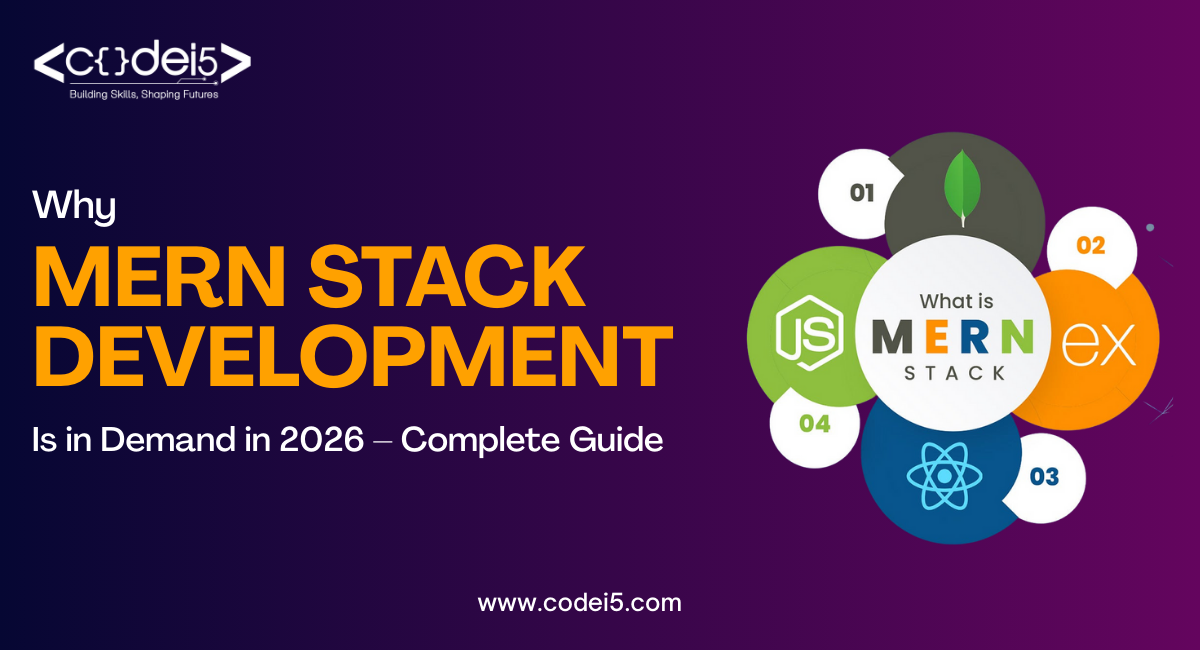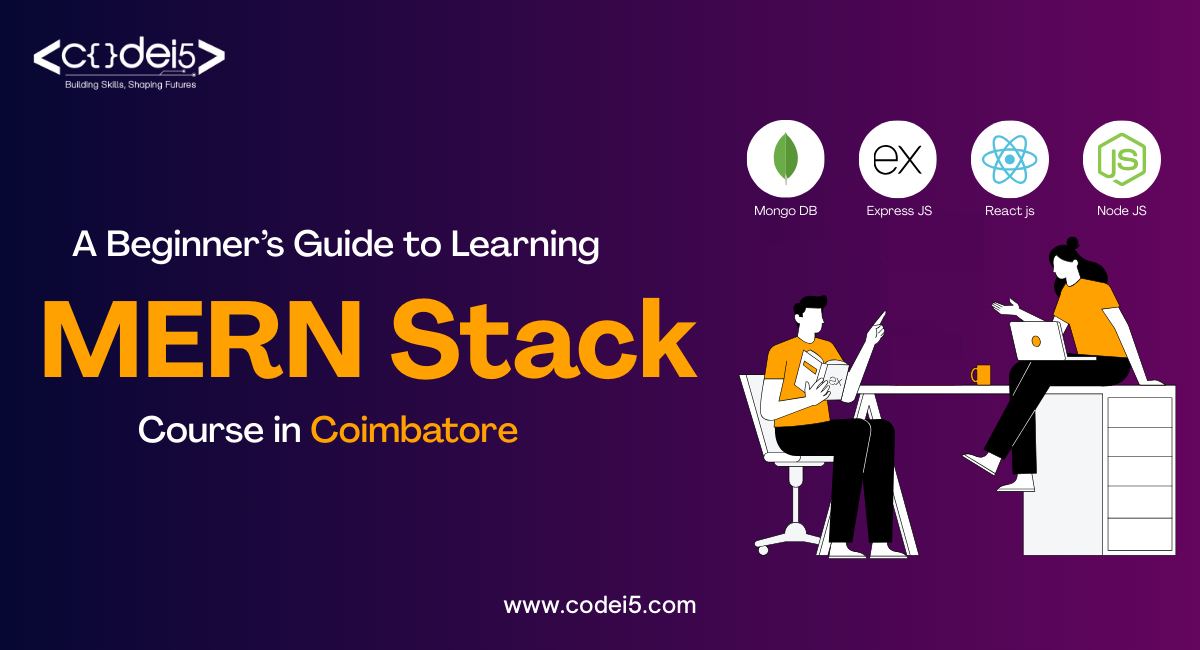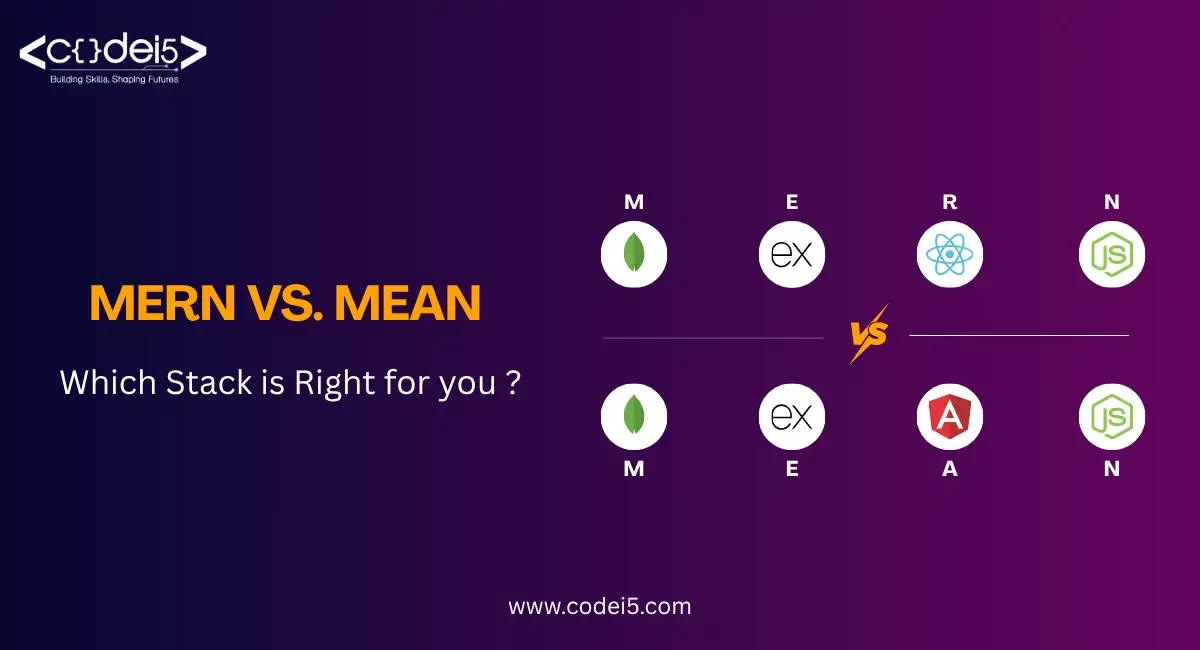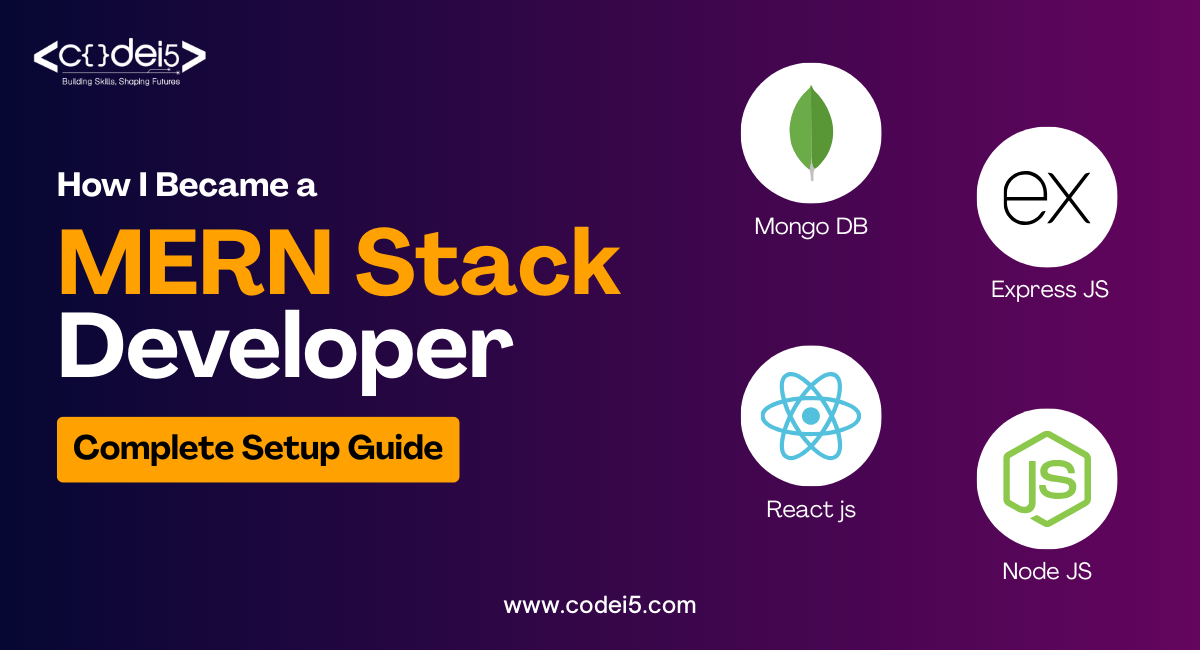How to Ace Your MERN Stack Interview: Key Questions and Answers

The MERN stack—MongoDB, Express.js, React.js, and Node.js—is widely favored in today’s web development. It’s popular because it lets developers use JavaScript for everything, making development faster, code cleaner, and workflows smoother. If you’re preparing for a MERN stack developer interview, this blog prepares you with essential questions and clear, detailed answers to help you excel.
Understanding the MERN Stack
Before exploring specific questions, ensure you possess a solid understanding of each technology within the MERN stack:
- MongoDB: It’s a database that stores data in flexible documents similar to JSON. It’s great for handling complex data and can scale easily.
- Express.js: This is a framework for Node.js that helps build web applications and APIs. It’s like a toolbox for creating efficient server-side logic.
- React.js: It’s a popular library for building user interfaces in JavaScript. It uses components, props, and state to make dynamic and reusable parts of a website or app.
- Node.js: It’s a runtime environment for executing JavaScript code outside of a web browser. This allows developers to build powerful and fast web servers.
Understanding these technologies is crucial for working with the MERN stack effectively in web development.
Mastery of the Fundamentals: Questions and Explained Answers
MongoDB
1. Question: What are the main differences between NoSQL and relational databases?
Answer: Relational databases have a fixed structure (schema) for tables, ensuring data integrity but can be rigid with changing data needs. NoSQL databases like MongoDB store data in flexible JSON-like documents, adapting well to diverse data structures and evolving requirements.
2. Question: Explain sharding in MongoDB.
Answer: Sharding in MongoDB spreads data across multiple servers (shards) to handle large amounts of data efficiently. As data grows, more shards can be added to manage increased workload, ensuring scalability.
3. Question: How do you manage data migrations in MongoDB?
Answer: Data migrations in MongoDB can be handled using tools like mongodump and mongorestore to back up and restore data to a new database. MongoDB Compass provides a user-friendly interface for visual data migration, simplifying the process.
Express.js
1. Question: What are the advantages of using Express.js over plain Node.js?
Answer: While Node.js can build web apps, Express.js makes it easier. It offers:
- Routing: Map URLs to functions that handle requests.
- Middleware: Functions that intercept requests and responses. They handle tasks like authentication, logging, or data validation, making code more organized and reusable.
- Web server setup: Quickly set up a server for handling requests without writing complex code.
2. Question: Explain the concept of middleware in Express.js.
Answer: Middleware are functions that work with request and response objects. They can do tasks like:
- Authentication: Check if a user is allowed access.
- Logging: Record requests and responses for debugging.
- Data validation: Ensure incoming data meets specific rules or formats.
3. Question: How do you handle errors in an Express application?
Answer: Error handling is crucial. Use error handling middleware to catch and manage errors during request processing. This middleware logs errors for debugging and sends clear error messages to clients, helping maintain a stable application.
React.js
1. Question: What are components in React?
Answer: Components in React are like building blocks for the user interface. Each component is a standalone piece of UI that manages its own logic and state. They can be combined to create complex interfaces, making code easier to maintain, reuse, and organize.
2. Question: What’s the difference between props and state in React?
Answer: Props are data passed from parent to child components, used to configure a component’s behavior or appearance. State, on the other hand, manages internal data within a component. It changes based on user interactions or other events, causing the component to update and re-render with new data.
3. Question: What is the Virtual DOM in React and why is it useful?
Answer: The Virtual DOM is a lightweight copy of the real DOM (the browser’s Document Object Model). React uses it to efficiently update the actual DOM when components change. By comparing changes in the Virtual DOM to the real DOM, React minimizes updates to the browser, improving performance and ensuring a smoother user experience.
Node.js
1. Question: What are the core strengths of Node.js for web development?
Answer: Node.js is great for web development because it uses an event-driven, non-blocking I/O model. This means:
- Event-driven: Instead of waiting for tasks to finish, Node.js reacts to events like user actions or requests, handling many tasks at once efficiently.
- Non-blocking I/O: It manages input and output operations (like reading files or making network requests) without stopping the main program. This allows Node.js to handle multiple operations simultaneously.
2. Question: How does Node.js handle asynchronous operations?
Answer: Traditional servers might pause while waiting for tasks like database queries or file reads to finish. Node.js handles these tasks differently:
- Callbacks: Functions passed to other functions to run when an operation completes. However, too many nested callbacks can lead to complex code.
- Promises: Objects representing the result of an asynchronous operation. Promises offer a cleaner way to manage asynchronous code flow.
- Async/await: A newer syntax in JavaScript that makes asynchronous code look more like synchronous code, improving readability and simplifying error handling.
3. Question: How do you implement user authentication in a Node.js application?
Answer: There are two common methods for user authentication in Node.js:
- JSON Web Tokens (JWT): Secure tokens used to transmit user information between client and server. JWTs are ideal for stateless authentication where the server doesn’t store session data.
- Session-based authentication: Stores user session data on the server-side, usually in a database or memory store. This method requires more server-side management but can be simpler for certain applications.
Scenario-Based Questions with Explanations
1. Scenario: Describe a challenging MERN application you’ve built and the technical decisions you made.
Explanation: Highlight a project where you applied MERN concepts to solve specific challenges. Discuss decisions like choosing between a relational database and MongoDB, and why you made those choices based on the project’s requirements and trade-offs.
2. Scenario: How would you optimize the performance of a React component that’s rendering a large list of items?
Explanation: Discuss practical ways to improve rendering speed:
- Memoization: Cache component outputs based on input data to avoid unnecessary re-renders, especially for complex computations.
- Virtual Scrolling: Render only visible list items, which speeds up performance for long lists by focusing rendering efforts on what’s currently visible.
- Lazy Loading: Load data for list items only when they’re about to appear on the screen, reducing initial load time and enhancing user experience for large datasets.
3. Scenario: Explain your approach to debugging a complex issue in a MERN application.
Explanation: Demonstrate your problem-solving skills:
- Identify the problem: Clearly describe the issue, such as error messages or UI problems.
- Gather information: Use tools like console logs or breakpoints to understand data flow and find potential error sources. Analyze error messages and stack traces for clues.
- Isolate the issue: Narrow down the problematic code by testing different parts of the application methodically.
- Implement a solution: Fix the root cause and thoroughly test to ensure the problem is resolved without introducing new issues.
- Document your fix: Write down the problem, steps taken to debug, and how you fixed it for future reference and to help other developers understand the solution.
General Interview Tips:
- Practice: Practice answering common interview questions to communicate clearly and confidently during your interview.
- Show Enthusiasm: Express your passion for MERN development. Let your excitement about the technology come across.
- Ask Questions: Ask thoughtful questions to show your interest and initiative in learning about the role and company.
- Highlight Teamwork: Talk about your problem-solving skills and how you collaborate with other developers and team members effectively.
- Professionalism: Maintain a positive and confident attitude. Dress professionally and arrive punctually for your interview.
Bonus Tip
- Explore Tutorials: Use online tutorials to enhance your skills in the MERN stack.
- Learn Libraries: Get familiar with useful MERN stack libraries like Redux for state management, Mongoose for MongoDB interaction, and Axios for HTTP requests.
- Stay Updated: Follow tech blogs, attend meetups, or join online communities to stay informed about the latest advancements in MERN stack development.
Codei5 Academy’s MERN Stack Course:
Codei5 Academy offers top-notch MERN Stack Course designed to equip you with practical skills and industry-relevant knowledge. Our courses cover everything from basics to advanced concepts, ensuring you’re well-prepared for real-world MERN development challenges.
Conclusion
Mastering the basics of the MERN stack, practicing common interview questions with explanations, showcasing your problem-solving abilities, and staying updated on the latest trends will prepare you to impress interviewers and secure your ideal MERN stack developer role!
ACE it!


